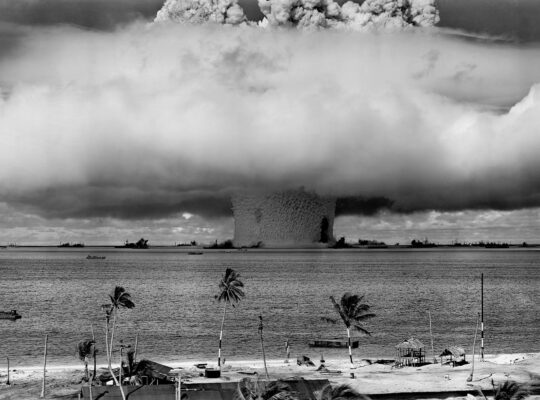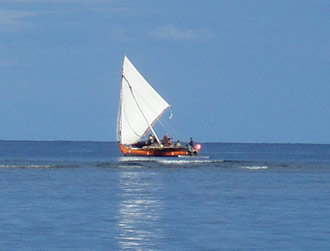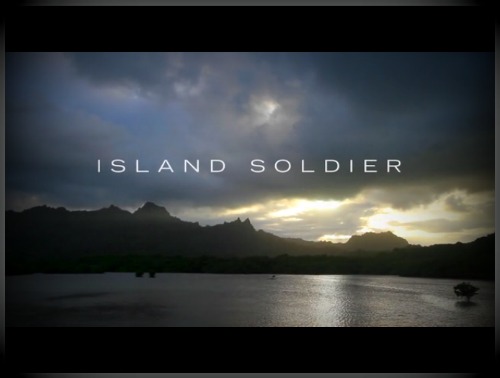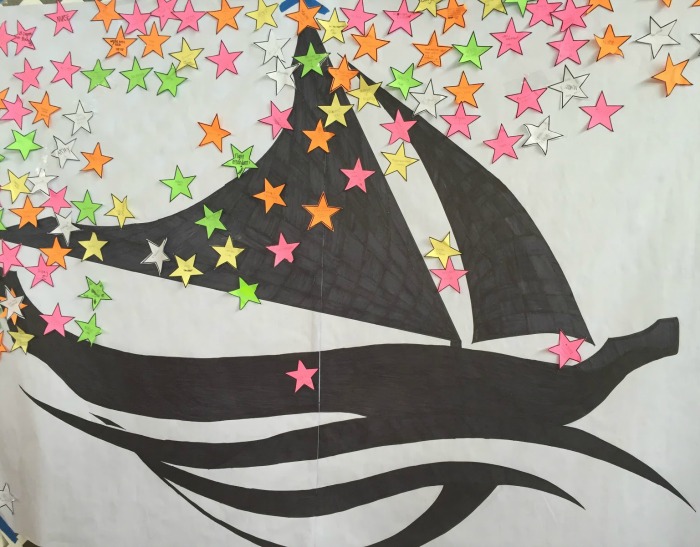I AM excited because WE ARE accepted into the doctoral program at the University of Hawai’i at Manoa’s College of Education. This journey is not mine alone. I am today because of so many companions on the journey. Our new journey that began yesterday had a synergy likened to the buzz on my island in Chuuk when a new outrigger sailing canoe is launched on a maiden voyage. I felt blessed to have twenty five amazing pilooy (companions on a sea voyage) from different pathways with diverse experiences. We have all been paddling our individual canoes all over the world; somehow we were selected to be part of the crew of this canoe called Cohort II to paddle together for the next several years. Our destination is unknown, but I trust that along the way we will have grown from being individual paddlers to becoming (or at least learning to be) wise navigators of knowledge, compassionate leaders of people, and courageous champions of justice.
With so much buzz in Hawaii about Malama Honua, the worldwide voyage of the Hokule’a and her sister canoe Hikianalia, it seems only fitting for me to seek the spirit of my uncle and pwo (master navigator) Mau Piailug to help put my new academic journey into proper perspective.
So here I am on this clear Sunday morning at the newly completed mural located on the corner of Cooke and Auahi Streets in the industrial area of Kaka’ako in Honolulu. Created by 808urban, the mural honors Papa Mau Piailug probably the most referred Micronesian in Hawaii who held the highest honorary doctorate in traditional navigation from UH Manoa yet the Western world has no system of real accreditation to honor his knowledge.
Pius Mau Piailug, Micronesia’s greatest migrant to Hawaii re-connected the spirit of our one oceanic people. He single handedly revived the art of traditional voyaging for the native Hawaiians. He generously taught and conferred the highest traditional honor of pwo on a handful of Hawaiians including Shorty Bertelmann, Nainoa Thompson. And they have carried that legacy forward to their people.
As I sit in my rental car gazing at this beautiful mural, I am deeply struck by the intensity of the art which truly communicated the spirit of this Micronesian ambassador to the Hawaiian people and the world. True to the uncle who I remember from my youth, the picture of his face communicated the qualities of a paluwlap who was fierce yet calm, wise yet humble, courageous yet respectful.
Lest we forget, we are all immigrants…
Something about Mau’s face disturbs and enlivens me. There seems to be a depth of sadness within this caring and fierce gaze of a humble leader. I am overwhelmed by the clashing waves of irony as I think about all that is happening to Micronesians who have navigated by Mau’s star to these beautiful Hawaiian Islands. We have a long way to go to enjoy the peace and harmony bridged by the late Papa Mau when he spoke about the Oceanic people as being one people connected by the ocean.
We, Micronesians, were also guided by a “special bond” between the United States and our respective nations of the Federated States of Micronesia (FSM), Republic of the Marshall Islands (RMI), and the Republic of Palau (ROP). Our governments signed a treaty known as the Compacts of Free Association (COFA) with the United States in the late 80’s which allowed open migration of COFA citizens to the US to live, work, and seek better healthcare and education. In exchange for the open migration, we gave our territorial waters and air space to the strategic military interest of the US government. After President Reagan and the US Congress signed the COFA treaty into law, thousands of Micronesians began to set sail fo Hawaii and Guam…the closest American soil…expecting to be welcomed. Quite the contrary.
Sad lessons learned from the crashing waves…
It saddens me that many brothers and sisters in the great state of Hawaii who are sons and daughters of immigrants (Japanese, Portugese, Filipinos, Samoans, etc) have forgotten their own history; they have become oppressors of the latest immigrant population to arrive on the shores of these lands once ruled by great kings and beloved by queens of the Aloha Spirit.
It saddens me that COFA citizens in Hawaii and Guam are victimized by the politics of compact impact fiscal resource feuding between the local politicians and the federal government; the circus of local leaders blaming societal issues on Micronesian immigrants become sensationalized headlines on local media which only fuels racial prejudice and discrimination.
It saddens me that COFA citizens though living legally in Hawaii have been singled out as the only ethnic group in Hawaii prevented from benefiting fully in the state-funded health insurance. Yet COFA citizens pay the same taxes that support these services. That is an injustice brought on by a Republican governor bend on solving fiscal challenges on the coffins of dying COFA patients in this Rainbow State.
It saddens me that lost in the negative headlines of blame are the positive stories of the majority of COFA citizens who are hard-working members of society. They pay the same taxes as all employees, contribute to the local economic, social, cultural, and educational well-being of the State as all other law abiding citizens.
It saddens me that COFA kids most of whom are English Language Learners (ELL) are treated unfairly by the system, wrongly blamed for the lowering of educational standards, and unjustly labeled by some frustrated teachers as the cause of racially-motivated violence in schools. Often schools expect the ELL kids and their parents to become good English speakers, cultural experts, and assimilate into the American lifestyle overnight. Yet they are not given the support, resources, or training to get there.
It saddens me that COFA youth are afraid to be their true selves, celebrate their rich cultures, traditions, values, and languages lest they become victims of ignorant “locals.”
But there is a deeper sense of hope and gratitude…
For the faculty, staff, and administration of the College of Education at the University of Hawaii at Manoa for giving me this incredible opportunity to be part of the journey of Cohort II.
For my family Desha, Keala, Keoni the love of my life for their huge sacrifices of a lot of financial resources and a soon-to-be absent father so I can pursue my lifelong dream of completing a doctorate at UH Manoa.
For my Pacific Islander students at UH Hilo who struggle to make ends meet yet persist to graduate from college to return home to help their people.
For the network of compassionate activists, service providers, lawyers, educators, and politicians who tirelessly advocate for the rights and justice for COFA citizens in Hawaii and the US.
For the hospitality afforded to us Micronesians by many more Hawaiian people than those who discriminate against us.
For their commitment to revive their culture which in turn encourages us to perpetuate our own cultures, traditions, values, and languages even if it might be hard at this time to publicly display them.
For Papa Mau Piailug and his courage and wisdom to perpetuate our traditional art of wayfinding with the Hawaiian people. For reminding us that the ocean actually binds islands together rather than separates us. That the Pacific people were once one people but were divided by foreigners and colonialists.
As I conclude my pilgrimage to Uncle Mau’s beautiful monument …
I am humbled by the spirit and wisdom of Papa Mau who held the highest doctoral degree in traditional wayfinding. Yet he needed no diploma, dissertation, or letters after his name to show the value of his giant heart and the contributions to the spirit of the native Hawaiians and all of us. His actions spoke louder than any title. And we are all a better people because of his generosity to perpetuate our culture.
I am cautioned to always remember that the real value of the doctoral degree in professional practice in education is bound up with service to others especially in helping children to become the best human beings that the Creator intended them and all of us to be on Her Canoe.
I am reminded that we are all paddlers on this canoe we inhabit called Earth. That the most valued knowledge is the one that is shared for the common good of humanity.
I am inspired to fully embrace my new journey with all its challenges (funding, time, less time with kids, etc) and humbly and courageously paddle my canoe out to the open sea. There, I pray someday I can find a fraction of Mau’s humilty, courage, and wisdom to raise my sail and carry people to fulfill their own dreams and destinies.
And as I bid Aloha and “Ole No, Mellap!” (You Stay On, O Great One) to Uncle Mau, I hear him in the depth of my being wishing me back in our outer island language, “Ole Kemwarhuk, Mouwerh!” (You Hold True & Be Safe on Your Journey, My Little Beloved One). We will paddle together in unison or this canoe will not move forward.
Let’s Do This! Together! People! #samecanoe #cofacan #weareoceania







